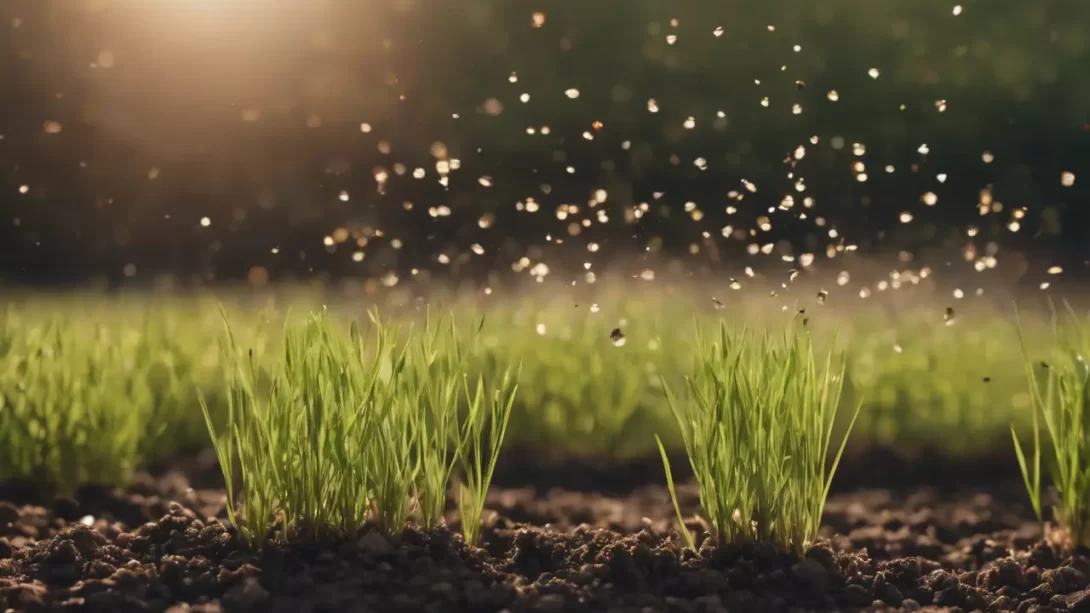Watering is a crucial part of lawn care, especially when it comes to grass seed germination. While adequate moisture is essential for the growth of healthy grass, a common concern among gardeners and homeowners is the possibility and consequences of overwatering grass seed. Understanding the balance between sufficient and excessive watering is key to successful lawn establishment.
Basics of Grass Seed Watering
Grass seeds require consistent moisture to germinate and establish roots. The amount and frequency of watering depend on various factors:
- Seed Type: Different grass seeds may have varying moisture needs.
- Soil Type: Sandy soils drain quickly and may require more frequent watering, while clay soils retain moisture longer and may need less.
- Climate and Season: Weather conditions greatly influence watering needs. Hot, dry weather increases the need for watering, while cooler, damp conditions require less.
A general guideline is to keep the top inch of soil consistently moist but not waterlogged during the germination period.
Risks of Overwatering Grass Seed
Overwatering grass seed can lead to several problems:
- Impeded Germination: Excessive water can drown grass seeds, depriving them of the oxygen needed for germination.
- Disease and Fungal Growth: Overly moist conditions are ideal for the growth of fungi and diseases that can harm seedlings.
- Soil Erosion and Seed Displacement: Heavy watering can cause soil erosion, displacing seeds and leading to uneven grass growth.
- Rotting of Seeds: Prolonged exposure to excess water can cause seeds to rot before they have a chance to germinate.
Understanding these risks highlights the importance of careful watering practices to ensure the healthy growth of grass from seeds.
Identifying Overwatered Grass Seed
To determine if you are overwatering your grass seed, look for these signs:
- Soil Moisture: The soil should be moist but not soggy. Puddles or a muddy surface are indicators of overwatering.
- Lack of Germination: Delayed or patchy germination can be a sign of overwatering.
- Fungal Presence: The appearance of mold or fungus on the soil surface suggests too much moisture.
Correct Watering Techniques for Grass Seed
Employing the right watering techniques is crucial for the successful germination and growth of grass seed:
- Frequency and Amount: Water lightly but frequently, ensuring the top inch of soil remains moist. During the initial stages of germination, this may mean watering several times a day.
- Tools and Techniques: Use a sprinkler that provides a gentle mist or a soaker hose to distribute water evenly without washing away seeds. Avoid heavy streams of water that can lead to erosion or seed displacement.
- Weather Adjustments: Be adaptable with your watering schedule. Reduce watering on cloudy or rainy days and increase it during hot, dry periods.
By following these best practices, you can provide an optimal environment for grass seed germination and growth.
Correcting Overwatering Issues
If you find that you’ve overwatered your grass seed, take these steps to remedy the situation:
- Adjust Watering Practices: Immediately reduce the frequency and amount of watering. Allow the top layer of soil to dry out slightly before the next watering session.
- Soil Aeration: If the soil has become compacted, gently aerate it to improve oxygen flow to the seeds. This can be done using a garden fork or aeration tools, being careful not to disturb the seeds too much.
- Soil Remediation: In cases of severe overwatering, it may be necessary to add additional topsoil or organic matter to help improve soil structure and drainage.
Taking these corrective actions can help salvage an overwatered area and promote healthy grass growth.
Preventive Measures for Optimal Watering
Preventing overwatering begins with proper planning and regular monitoring:
- Irrigation Planning: Before seeding, plan your watering strategy. Consider factors like soil type, climate, and the layout of your lawn to determine the best watering approach.
- Grass Seed Selection: Choose grass seed varieties that are well-suited to your local climate and soil conditions, as some types may require less water.
- Regular Monitoring: Keep a close eye on the weather and the moisture level of your soil. Adjust your watering schedule accordingly to prevent overwatering.
Conclusion
Overwatering grass seed is a common concern that can lead to various issues, including impeded germination, increased disease risk, and soil problems. However, with proper techniques and regular monitoring, you can effectively manage the watering of your grass seed to ensure healthy growth. Remember the key points for success:
- Moderate Watering: Provide consistent moisture but avoid waterlogging the soil. The goal is to keep the topsoil moist without making it soggy.
- Use the Right Tools: Employ a sprinkler system or soaker hose that delivers water gently and evenly across the seeded area.
- Adapt to Conditions: Adjust your watering schedule based on weather conditions and the moisture level of your soil. More frequent watering may be necessary in hot, dry weather, while less is needed when it’s cool or rainy.
- Monitor and Adjust: Regularly check the soil and emerging grass for signs of overwatering, such as water pooling, soil erosion, or fungal growth. Adjust your watering practices as needed to maintain the right moisture balance.
- Correct Issues Promptly: If you notice signs of overwatering, take immediate steps to correct the issue. Adjust your watering schedule, aerate the soil, or add topsoil if necessary.
By following these guidelines, you can avoid the pitfalls of overwatering and provide an ideal environment for your grass seed to thrive. Proper watering is a delicate balance, but with attention and care, you can foster a lush, healthy lawn that enhances your outdoor space. Remember, every lawn is unique, so be attentive to the specific needs of your grass and soil. With these tips in mind, you’re well-equipped to nurture your lawn from seed to maturity, ensuring a green and vibrant landscape.




